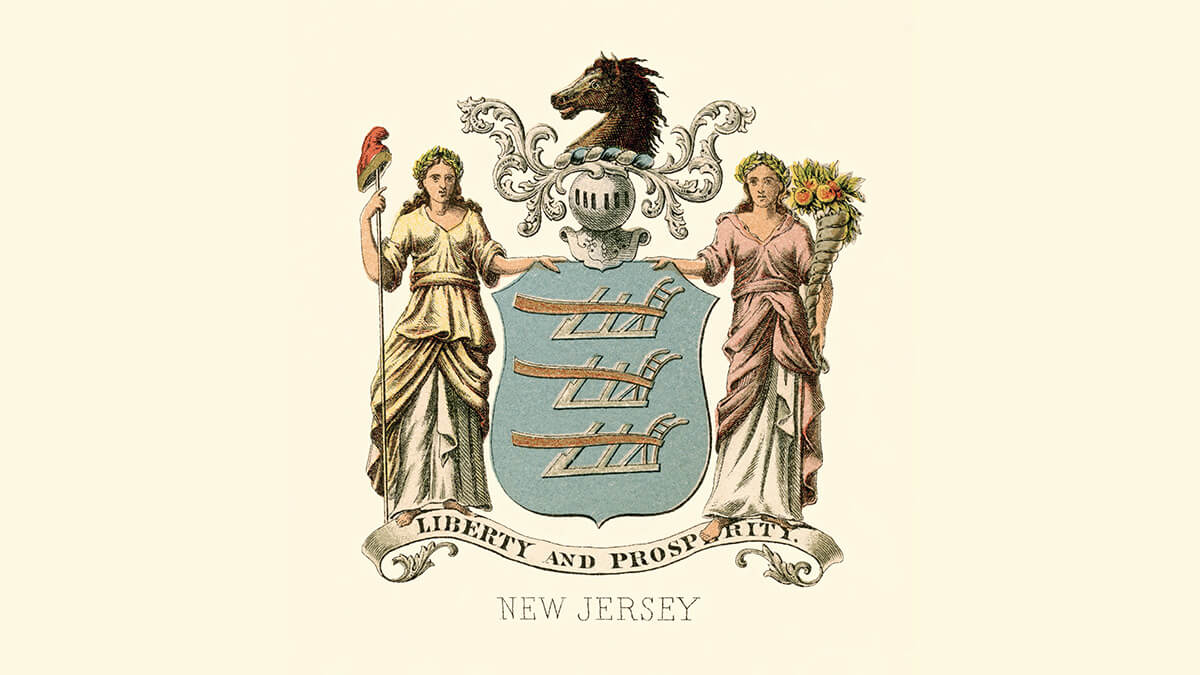Composition
The New Jersey flag features a field of buff charged with the state coat of arms, centered.

New Jersey became the third state to ratify the U.S. Constitution, named in honor of England’s Isle of Jersey.
Its flag is the only U.S. flag to feature a field of buff, often incorrectly represented as yellow. It’s one of many to showcase its state coat of arms.
The flag was officially adopted March 26, 1896.
The New Jersey flag features a field of buff charged with the state coat of arms, centered.

goddess of liberty, freedom
goddess of agriculture, prosperity
liberty, freedom
agriculture, bountiful harvest
state animal, transportation, farming
strength, sovereignty
strength, agricultural tradition
agriculture, fertile soil
New Jersey’s coat of arms was designed by Pierre Eugene du Simitiere in 1777.

Jersey Blue and Buff are New Jersey’s state colors, assigned with specific color values.
The colors were chosen by George Washington while encamped at Jockey Hollow during the Revolutionary War, originally for the New Jersey Line uniform coats.
The New Jersey Secretary of State’s Office provides Pantone color values for the colors within the seal.
New Jersey statute doesn’t specify dimensions, but the flag is usually produced with a proportion of 2:3.
